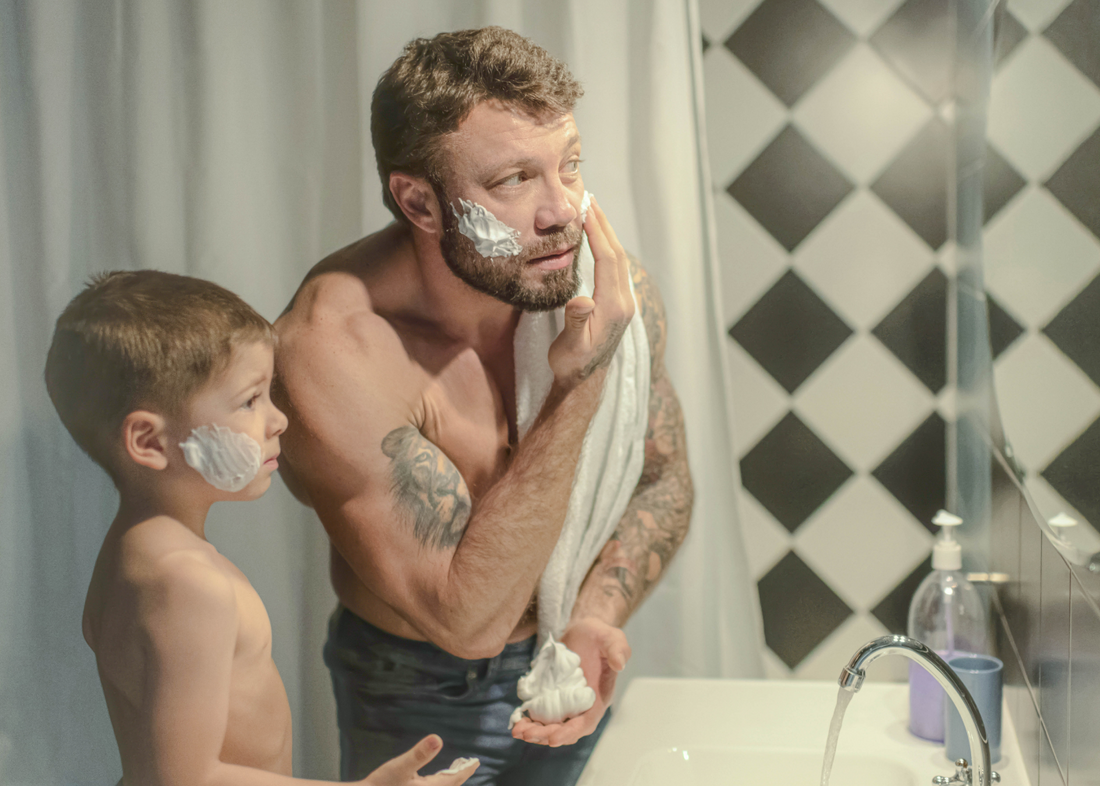
How to Exfoliate Before & After Shaving
Good things can happen when you know how to exfoliate properly: Your acne lessens, your skin begins to glow and shaving can become a heck of a lot easier. It’s helpful for every minor skin-related ailment you can imagine. To find out how to exfoliate like a boss — and if we should exfoliate before or after shaving — we asked hygiene and skin-care expert Allison Gallo for a few pointers. Here’s what she had to say.
How to Exfoliate
The skin on your face is more sensitive and delicate than the skin on the rest of your body, meaning it requires a particularly mild exfoliating technique. To exfoliate face skin, first, splash it with warm water to open the pores, which will loosen any lingering dry or dead skin. Then, use your fingers to gently scrub in a small circular motion with an exfoliating Prep Scrub (a cream filled with abrasive ingredients designed to physically scrape away dead skin), since loofahs and exfoliating cloths are too harsh for the face. Exfoliating the skin on the rest of your body is a little less tedious than exfoliating face skin: Simply scrub in small circles using a loofah or an exfoliating cloth covered with body cleanser. Feel free to apply more pressure to the feet and legs than, say, the nether region and the chest, since the skin is tougher in those area. Still, avoid scrubbing too hard, as this will damage the skin and cause irritation. If it starts to hurt, ease up. If your freshly exfoliated skin turns a bit red, don’t fret — this is to be expected, considering you’re scrubbing the skin and removing dead skin cells. A splash of cold water should lessen the initial redness and prevent irritation later in the day.
Exfoliate Before Shaving
Best practice is to exfoliate before shaving, rather than after. That’s because, as Gallo explains, “Exfoliating removes dirt and dead skin cells from the surface of the skin, which keeps your skin clean, unclogs your pores and helps you achieve a closer shave. Exfoliating pushes dirt and dead skin out of the way, which allows the razor to glide more smoothly over the skin.” Additionally, exfoliating before shaving lifts the hairs, making for a painless shave (think about it: If your hairs are lying flat against your face when you shave, the razor is going to tug on them, rather than slicing neatly through them). Lastly, exfoliating before shaving gives the Shave Butter or Shave Cream the opportunity to cozy up against the skin and provide more protection against razor bumps and irritation, which is always a plus.
Should You Exfoliate After?
Exfoliating after shaving, on the other hand, probably isn’t the best idea, since your freshly shaved skin will likely be sensitive (or possibly even cut) in certain places. Besides making everything burn, exfoliating directly after shaving will most likely irritate the skin and cause excess redness. Instead, gently pat dry your now-smooth face to remove any lingering hairs or dead skin cells that weren’t already washed away. Now that you know how to exfoliate (and whether to exfoliate before or after shaving), enjoy your painless shaves and your vibrant, unblemished skin. Hey, we told you good things happen when you know how to exfoliate properly.
